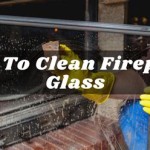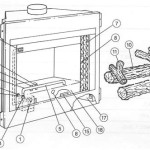Achieving Silent Warmth: Understanding Quiet Fireplace Insert Blowers
Fireplace inserts offer an efficient and aesthetically pleasing way to heat a home. However, one common complaint associated with these appliances is the noise generated by the blower. A blower is crucial for distributing the heat produced by the insert, forcing warm air into the room and maximizing its heating potential. The ideal blower operates effectively without introducing disruptive noise levels. This article examines the factors contributing to blower noise, explores technologies employed to mitigate it, and provides insight into selecting a quiet fireplace insert blower.
Understanding Fireplace Insert Blower Operation
Fireplace insert blowers are essentially fans designed to circulate air through the insert's heat exchanger. As the fire burns, the metal components of the insert, specifically the firebox and baffle system, heat up. The blower draws cooler air from the room, passes it over these heated surfaces, and then expels the warmed air back into the room. This forced convection method significantly improves heat distribution compared to relying solely on radiant heat. Without a blower, much of the heat generated by the insert would be lost up the chimney, reducing its overall efficiency. The speed of the blower is typically adjustable, allowing users to control the amount of heat circulated and, consequently, the temperature of the room.
The effectiveness of a fireplace insert blower is measured in cubic feet per minute (CFM). A higher CFM rating indicates the blower can move a greater volume of air, resulting in faster and more uniform heating. The CFM requirement for a particular insert depends on the size of the firebox, the heating capacity of the unit, and the size of the room it is intended to heat. Manufacturers typically provide recommended CFM ratings for their inserts. Selecting a blower with an appropriate CFM rating is critical to optimizing heat distribution and ensuring the insert operates efficiently.
Sources of Fireplace Insert Blower Noise
Several factors contribute to the noise produced by a fireplace insert blower. Understanding these sources is the first step in identifying solutions for noise reduction.
Motor Noise: The electric motor driving the blower fan is a primary source of noise. The motor's internal components, such as bearings and windings, generate vibrations as they operate. These vibrations can be amplified by the blower housing and surrounding structures, resulting in a humming or buzzing sound. The quality of the motor directly impacts the noise level; higher-quality motors typically incorporate features designed to minimize vibration and noise.
Fan Blade Design: The design of the fan blades themselves significantly affects noise generation. Blades that are not perfectly balanced or that have an inefficient aerodynamic profile can create turbulence and airflow disruptions, leading to increased noise. The material used to construct the fan blades also plays a role; some materials are more prone to vibration and noise than others. The number of fan blades, their angle, and their pitch all contribute to the overall noise profile of the blower.
Airflow Restrictions: Obstructions in the airflow path can increase the pressure and resistance experienced by the blower, forcing it to work harder and generate more noise. These obstructions can include dirty air filters, blocked vents, or improperly installed ductwork. Even minor restrictions can significantly impact blower noise levels. Ensuring that the airflow path is clear and unobstructed is essential for quiet operation.
Vibrations and Resonance: The blower unit can vibrate against the surrounding structure of the fireplace insert, creating resonant noise. This is particularly common if the blower is not securely mounted or if the insert itself is not properly installed. The vibrations can travel through the walls and floor, amplifying the noise and making it more noticeable. Using vibration-dampening materials and techniques can help to minimize this type of noise.
Bearing Wear: Over time, the bearings in the blower motor can wear down, leading to increased friction and noise. Worn bearings can produce a grinding or squealing sound, indicating that the blower requires maintenance or replacement. Regular lubrication of the bearings can help to prolong their lifespan and reduce noise.
Improper Installation: Incorrect installation of the blower, whether due to loose screws, misaligned components, or inadequate support, can result in increased noise levels. A qualified technician should perform the installation to ensure that the blower is properly secured and aligned. Following the manufacturer's instructions carefully is crucial for a silent operation.
Technologies for Quiet Fireplace Insert Blowers
Manufacturers have developed several technologies to reduce the noise generated by fireplace insert blowers. These innovations focus on minimizing vibration, improving airflow, and dampening sound.
ECM Motors: Electronically Commutated Motors (ECMs) are more efficient and quieter than traditional AC motors. ECMs use advanced electronic controls to optimize motor speed and torque, reducing vibration and noise. They also offer variable speed control, allowing users to fine-tune the blower speed to achieve the desired level of heat output without excessive noise. ECMs are generally more expensive than AC motors, but their superior performance and quiet operation make them a worthwhile investment for those seeking a silent heating solution.
Optimized Fan Blade Design: Advanced fan blade designs incorporate aerodynamic principles to minimize turbulence and noise. Blades with curved surfaces, optimized angles, and strategically placed slots help to smooth airflow and reduce drag. Some manufacturers use computational fluid dynamics (CFD) software to simulate airflow patterns and optimize blade designs for minimum noise generation. These designs often incorporate more blades with smaller angles to distribute airflow more evenly and reduce pressure fluctuations.
Vibration Isolation: Vibration isolation techniques are used to decouple the blower unit from the surrounding structure, preventing vibrations from being transmitted and amplified. These techniques include using rubber or foam pads to cushion the blower, as well as employing flexible couplings to connect the blower to the air ducts. Vibration isolation effectively reduces resonant noise and improves overall blower silence.
Acoustic Dampening Materials: Acoustic dampening materials, such as foam or fiberglass insulation, are used to absorb sound waves and reduce noise levels. These materials can be applied to the blower housing, the interior of the fireplace insert, and the surrounding walls and floor. Acoustic dampening materials are particularly effective at reducing high-frequency noise and creating a more comfortable and quiet environment.
Variable Speed Control: Variable speed control allows users to adjust the blower speed to match their heating needs. At lower speeds, the blower operates more quietly, while at higher speeds, it provides greater heat output. Variable speed control gives users the flexibility to prioritize either quiet operation or maximum heating performance, depending on their preferences. Some blowers offer automatic speed control, which adjusts the blower speed based on the temperature of the firebox.
Sealed Blower Housings: Some manufacturers incorporate sealed blower housings to further reduce noise. These housings are designed to contain the sound generated by the blower motor and fan, preventing it from escaping into the room. The housings are typically made of heavy-gauge metal or durable plastic and are carefully sealed to minimize air leakage.
Balanced Fan Assemblies: Ensuring that the fan blades are perfectly balanced is crucial for minimizing vibration and noise. Manufacturers use precision balancing equipment to identify and correct any imbalances in the fan assembly. A balanced fan assembly rotates smoothly and quietly, reducing wear and tear on the motor and improving overall blower performance.
Selecting a Quiet Fireplace Insert Blower
Choosing a quiet fireplace insert blower requires careful consideration of several factors. Evaluating noise ratings, material quality, and compatibility with the existing fireplace insert is essential.
Noise Rating (dBA): The noise level of a blower is typically measured in decibels (dBA). A lower dBA rating indicates a quieter blower. Most manufacturers provide noise ratings for their blowers, allowing consumers to compare the noise levels of different models. Look for blowers with dBA ratings below 50 for noticeably quiet operation. It's important to note that noise ratings are measured under controlled conditions and may vary depending on the installation environment.
Motor Type and Quality: Opt for a blower with an ECM motor for superior efficiency and quiet operation. If an AC motor is used, ensure that it is a high-quality model with sealed bearings and vibration-dampening features. Research the manufacturer’s reputation for producing durable and quiet motors. Reading consumer reviews can offer insights into the long-term noise performance of different motor types.
Fan Blade Material and Design: Choose a blower with fan blades made of durable and lightweight materials, such as aluminum or reinforced plastic. Look for blades with an optimized aerodynamic design, such as curved surfaces and strategically placed slots. Avoid blowers with blades that appear flimsy or poorly constructed.
Compatibility with the Fireplace Insert: Ensure that the blower is compatible with the specific model of fireplace insert. Check the manufacturer's specifications to determine the correct CFM rating and physical dimensions for the blower. Using an incompatible blower can result in inefficient heating, increased noise, and potential damage to the fireplace insert.
Installation and Mounting: Proper installation is crucial for quiet operation. Consider having a qualified technician install the blower to ensure that it is securely mounted and properly aligned. Use vibration-dampening materials to isolate the blower from the surrounding structure. Avoid overtightening screws or bolts, as this can transmit vibrations and increase noise levels.
Warranty and Support: Choose a blower from a reputable manufacturer that offers a comprehensive warranty and excellent customer support. A good warranty indicates that the manufacturer stands behind the quality of its product. Contact the manufacturer or retailer if you have any questions or concerns about the blower's performance.
Consumer Reviews and Ratings: Research consumer reviews and ratings before purchasing a blower. Pay attention to comments about noise levels, performance, and durability. Look for blowers that consistently receive positive reviews from customers who have reported quiet operation. Be cautious of reviews that seem overly positive or negative, as these may be biased.

Noisy Gas Fireplace Blower Here S How To Replace It Diy

5 Blade Stove Fan Heat Powered Fireplace Quiet Circulating Warm Air Saving Fuel For Wood Log Burner Gas Pellet Burning Black Com

Gerich 5 Blade Fireplace Fan Unpowered Quiet Operation For Com

5 Blade Stove Fan Heat Powered Fireplace Quiet Circulating Warm Air Saving Fuel For Wood Log Burner Gas Pellet Burning Black Com

5 Blade Stove Fan Heat Powered Fireplace Quiet Circulating Warm Air Saving Fuel For Wood Log Burner Gas Pellet Burning Black Com

Home Complete Heat Powered Wood Burning Stove Fan Hw0200206 The Depot

Why Do I Need A Blower Fan On My Fireplace We Love Fire

Heat Powered Stove Fan For Wood Fast Start 4 Blade Fireplace Fans Ultra Quiet Us

1pc 6 Blade Fireplace Fan New Black Heat Wood Stove Log Burner Mini Heater Silent Household Efficient Distribution Thanksgiving Gift Fall Winter Essential Free

Hawcafu Wood Stove Fan Heat Powered Fireplace Log Burner For
Related Posts








